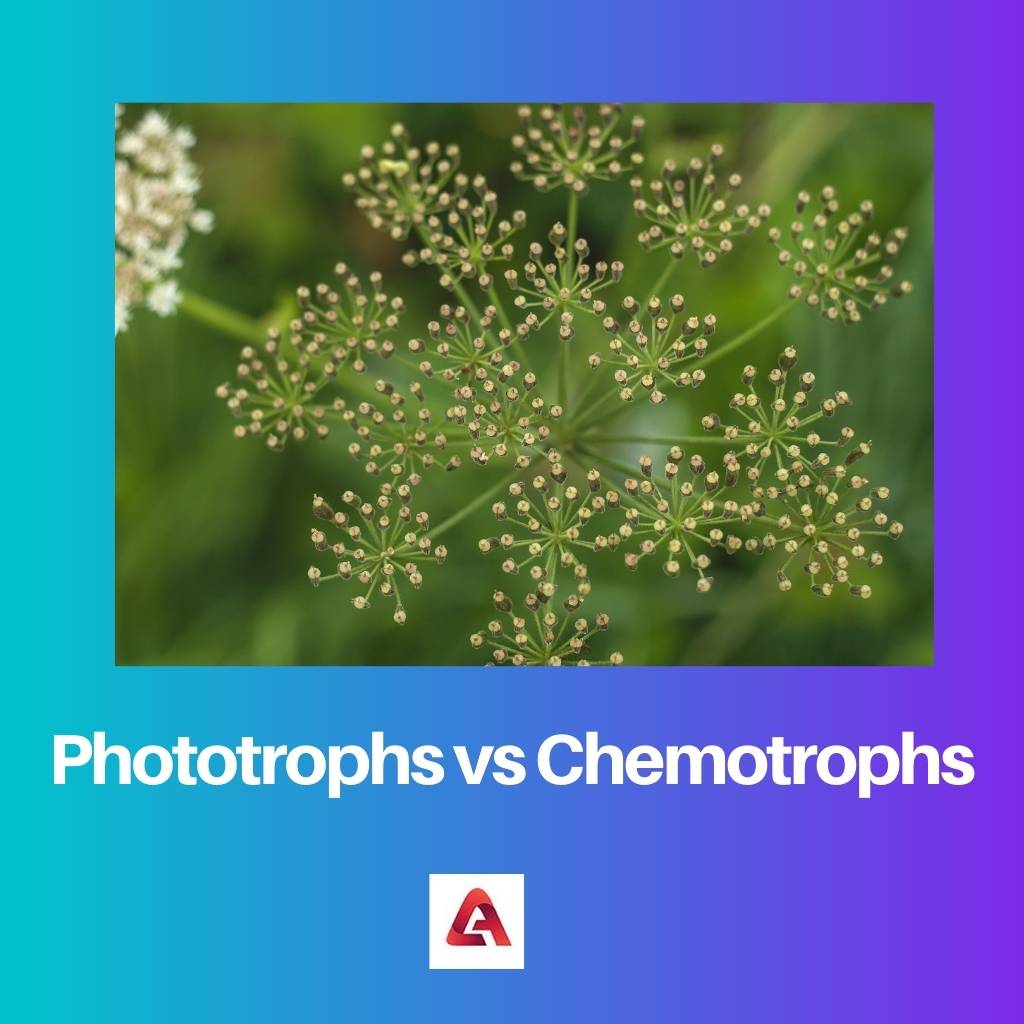Both organisms are well known as they have been part of science. Some are capable of making their food, and some are not capable of making their food.
Key Takeaways
- Phototrophs are organisms that derive energy from sunlight, while chemotrophs obtain energy from chemical reactions.
- Photosynthesis is the primary mode of energy production for phototrophs, while chemotrophs rely on cellular respiration or fermentation.
- Phototrophs are found in environments with ample sunlight, such as on the ocean’s surface. In contrast, chemotrophs are found in environments with abundant chemical energy, such as deep-sea vents.
Phototrophs vs Chemotrophs
The difference between Phototrophs and Chemotrophs is Phototrophs consume sunlight as the source of energy to undergo photosynthesis, but Chemotrophs use chemical reactions and undergo chemosynthesis to get energy. Chemotrophs do not use sunlight to undergo chemosynthesis. Chemotrophs use energy from the oxidation of carbon compounds. Phototrophs consume sunlight and turn it into chemical energy.

Phototrophs are the organism whose source of energy is sunlight. They consume the light of the sunlight as energy and convert it into chemical energy.
Chemotrophs are organisms whose source of energy is the oxidation of carbon dioxide. They undergo chemosynthesis.
Comparison Table
| Parameters of Comparison | Phototrophs | Chemotrophs |
|---|---|---|
| Energy | light energy | Oxidizing electron donors energy |
| Process | Photosynthesis | Chemosynthesis |
| Sunlight | Yes | No |
| Source | Sunlight | Chemical compounds |
| Divisions | Photoautotrophs and Photoheterotrophs | Chemoautotrophs and Chemoheterotrophs |
| Example | Green plants | Nitrosomonas |
What are Phototrophs?
Phototrophs are organisms that take their energy from the sun. They consume the light from the sun and then turn the energy into chemical energy.
They have two groups in which the classification of Phototrophs is done. The Phototrophs are classified into Photoautotrophs and Photoheterotrophs.
They do not use carbon dioxide but other organic compounds through which they can take carbon dioxide for their food.
The two classifications are different in their process, in which the consumption of carbon dioxide is different, which means the source is different.

What are Chemotrophs?
The carbon compounds are oxidized, and then it is consumed by the organism to initiate and complete the metabolic activities in the body.
The inorganic compounds are oxidized and turned into organic compounds. Sulfur-oxidizing proteobacteria are some examples of Chemotrophs.
Chemoheterotrophs cannot consume carbon by oxidizing inorganic compounds. The inorganic compound is of no use to the Chemoautotrophs.
These organisms consume energy through the oxidation of electron donors. They cannot consume light from the sun for their energy.

Main Differences Between Phototrophs and Chemotrophs
- Phototrophs have two divisions, as Photoautotrophs and Photoheterotrophs, but Chemotrophs have two divisions, as Chemoautotrophs and Chemoheterotrophs.
- Green plants are phototrophs, but Nitrosomonas are chemotrophs.

- https://aslopubs.onlinelibrary.wiley.com/doi/abs/10.4319/lo.1997.42.1.0198
- https://www.sciencedirect.com/science/article/pii/S0022519319300542

The references provided offer valuable sources for further exploration of the fascinating topics of Phototrophs and Chemotrophs, facilitating a deeper understanding of their ecological roles.
Absolutely. The scientific literature cited supports the comprehensive nature of the discussion and encourages additional inquiry into the complex mechanisms of energy transfer in nature.
The division of Phototrophs into Photoautotrophs and Photoheterotrophs, as well as the classification of Chemotrophs, provides a comprehensive framework for understanding the diverse energy acquisition strategies employed in nature.
Well said. The distinct divisions within Phototrophs and Chemotrophs offer valuable insights into the complexities of metabolic processes and nutrient cycling within ecosystems.
The detailed descriptions of Phototrophs and Chemotrophs elucidate the intricate metabolic pathways and energy transactions that underpin the functioning of ecosystems, highlighting the diverse adaptations of organisms.
Indeed, the in-depth analysis of the energy acquisition mechanisms of Phototrophs and Chemotrophs provides valuable insights into the interconnectedness of life forms and the dynamic processes of the natural world.
The unique methods of energy acquisition utilized by Phototrophs and Chemotrophs highlight the remarkable adaptability of biological systems. Their distinct processes play a critical role in ecosystems.
Absolutely. The ability of these organisms to derive energy from differing sources is a testament to the incredible diversity and complexity of life on Earth.
The comparison of Phototrophs and Chemotrophs is insightful. Understanding their differing energy sources enhances our comprehension of ecosystem dynamics and the adaptations of living organisms.
Agreed. Research on Phototrophs and Chemotrophs provides valuable insights into the interconnectedness of life forms and the functioning of natural environments.
The main differences outlined between Phototrophs and Chemotrophs provide a clear and concise overview of the contrasting energy acquisition processes, enriching our knowledge of the diversity of life forms.
Well expressed. The delineation of the distinctive categories within Phototrophs and Chemotrophs contributes to a more comprehensive understanding of the myriad biological strategies for energy capture.
The examples provided for each category of organisms – green plants as Phototrophs and Nitrosomonas as Chemotrophs – offer concrete illustrations of the diversity and significance of energy acquisition mechanisms in living organisms.
I couldn’t agree more. The tangible examples serve as powerful demonstrations of the remarkable diversity of life and the various energy pathways that sustain ecological communities.
The detailed comparison table effectively captures the fundamental differences between Phototrophs and Chemotrophs, shedding light on their contrasting modes of energy acquisition.
Phototrophs and Chemotrophs play a significant role in the ecological balance of our planet. It’s crucial to understand how they derive energy in different ways to survive in various environments.
Indeed, the distinction between Phototrophs and Chemotrophs is fascinating. The unique metabolic processes they employ are essential for the functioning of ecosystems.
The role of Phototrophs and Chemotrophs is a testament to the incredible diversity of life on Earth. Their energy acquisition mechanisms contribute to the overall resilience of our biosphere.
The detailed explanations of Phototrophs and Chemotrophs deepen our appreciation for the diverse energy pathways utilized by different organisms, emphasizing the complex and interconnected nature of life on Earth.
Absolutely. The elucidation of the distinct energy sources and metabolic processes of Phototrophs and Chemotrophs enhances our understanding of ecosystem dynamics and the adaptive strategies of living organisms.